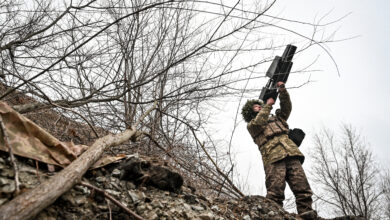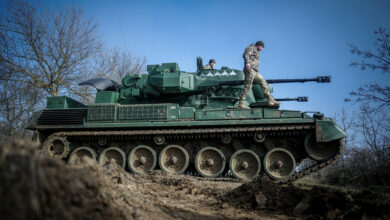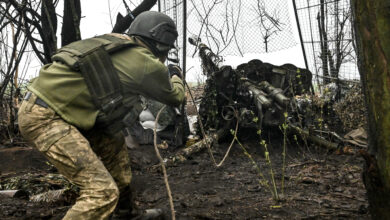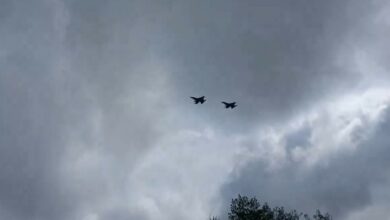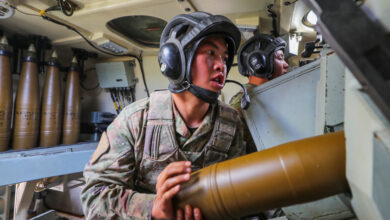Ukraine offers a glimpse into the future of counter-drone warfare
“Soldier go home.”
“Soldier kill your commanding officer.”
These are some of the text messages that have been sent to Ukrainian forces in the Donbass region by Russia. Russia can deploy such personalized propaganda thanks to its use of unmanned aerial vehicles in its war with Ukraine.
The future of UAV warfare is being decided in the skies over occupied eastern Ukraine where Russian drones and Ukrainian counter-measures shed light on the state of conflict.
UAVs and counter-UAV technology “are something we are facing on a daily basis,” Major General Borys Kremenetskyi told the SMi organized UAV Technology conference in London on Tuesday, October 1.
Multiple countries around the world operate drones but only in Europe are conventional armies deploying unmanned aerial systems against each other in a hostile manner.
The conflict between forces in Ukraine has pitted two forces who use UAVs against each other.
Similarly both Azerbaijan and Armenia deployed drones against each other in the 2016 “April War” in which Azerbaijani forces recaptured some of the territory occupied by Armenia.
Drones have had a large impact on the morale of Ukrainian soldiers who perceive as providing reconnaissance for heavy weapons systems.
“The Budapest Memorandum guaranteed our sovereignty in exchange for giving up nuclear weapons but, it became a piece of paper … we were not ready to fight and such a massive use of UAVs,” Kremenetskyi, the Armed Forces Defense and Air Attache to the Ukranian embassy in London, said of the conflict which has claimed over 8,000 lives in half a decade.
The Ukrainian experience demonstrates that UAV defense and traditional air defense should be integrated. A wide variety of drones have been deployed in support of the 1st and 2nd Army Corps deployed in eastern Ukraine, and the Ukranian air defenses have shot down some 45% of drones in the conflict, with another 40% downed by small arms fire and the final 10% with electronic measures.
“The most commonly shot-down Russian drone is the Orlan-10 … it’s easy to shoot down,” Kremenetskyi said, adding that the drone has also been used in Libya and Syria where Free Syrian Army forces claim to have shot one this past June near Aleppo. In one incident last year a Ukrainian Mi-24 Hind helicopter destroyed an Orlan-10, a propellor-driven medium-range, multi-purpose UAV primarily used for ISR.
“Our systems have proven more than capable of operating in an environment like Ukraine where technology companies have to take into consideration winter temperatures,” said Paul Taylor, Director of Enterprise Control Systems, who attended the London conference.
Conversely, Ukrainian forces have been frustrated with other military equipment provided by French and American sources. Over the past two decades many weapons systems have been developed for the African or Middle East theaters but in Ukraine temperatures can drop to -20 or even -30 degrees Celsius, forcing Ukrainian forces to reconfigure ill-prepared Western weapons systems on the fly using Soviet-era components.
Taylor pointed to the role of technology during the battle for the Iraqi city of Mosul in 2016 and 2017. He said his company’s counter-UAV technology was used to down 70 drones in one day, likely adding to the battlefield confusion experienced by Islamic State fighters.
“Electronic measures are quiet … They can confuse operators who think that there is a technical issue or that they have purchased a dud. It’s pretty clear when a drone is being shot at,” Taylor said while stressing that kinetic and electronic measures must work together to counter UAV threats.
This sentiment is supported by the experience of Ukranian forces in their struggle with the Russia-backed fighters, offering a key lessons for militaries around the world.
“Counter UAV systems and air defense systems should work together to defend the airspace, ” Kremenetskyi said. “Simply creating a counter UAV system is impossible.”
This story was updated on October 2, 2019 to correct a wrongly attributed quote.



